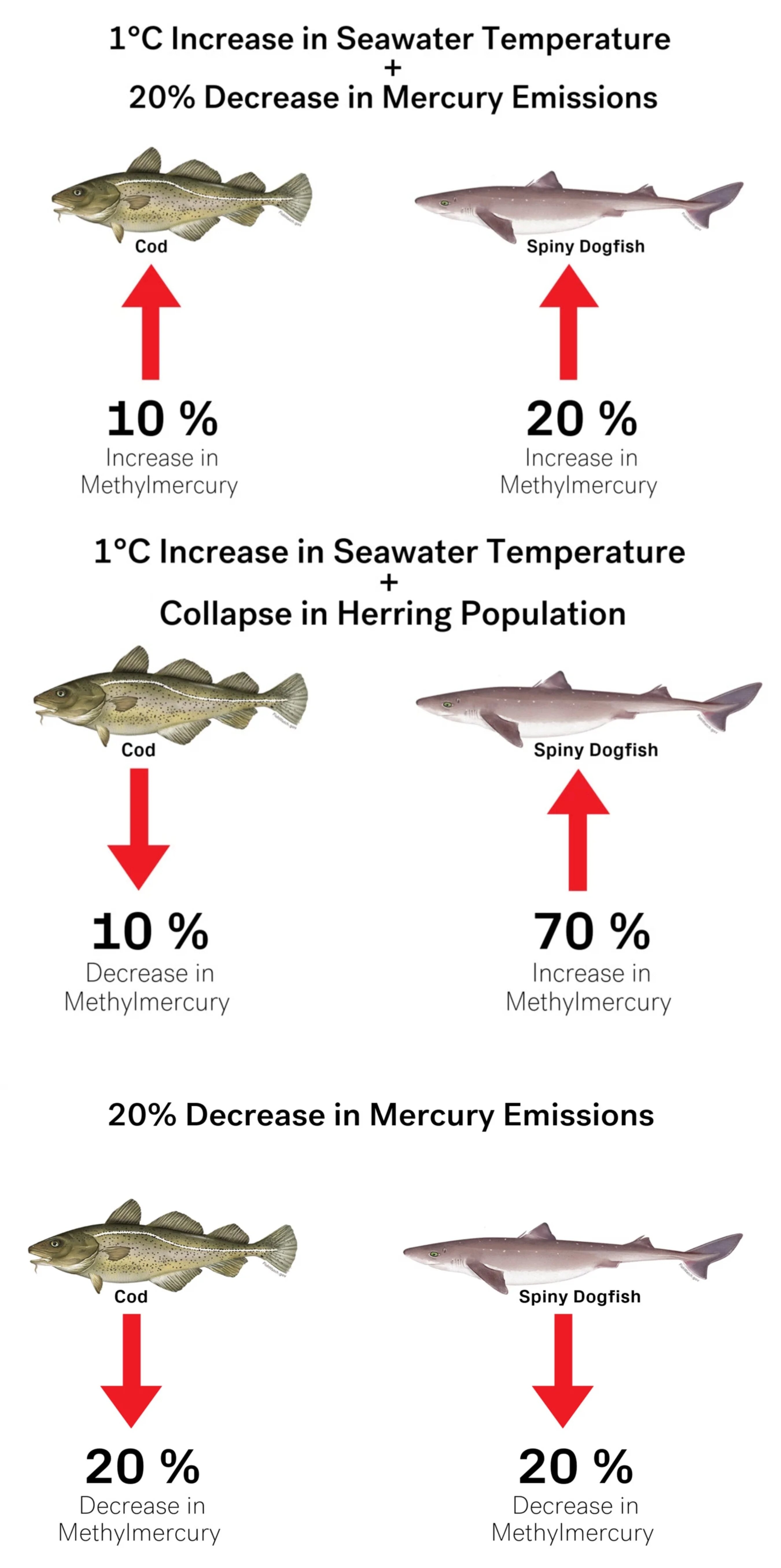Biodiversity & Environment
Mercury Emission Versus its Concentration in Fishes
- 10 Aug 2019
- 4 min read
Recently researchers have found that despite a decrease in seawater concentration of methylmercury, the amount of mercury found in fish is different among different species
- A joint research conducted by the Indian Institute of Technology, Hyderabad (IIT-H), Harvard University, and Fisheries and Oceans Canada (a Canadian government agency) has found that though there has been a decrease in the levels of mercury emission, the concentration of mercury in fish varies across different species.
- Some species of fish have less mercury than before, while others have a very high concentration of mercury (tuna, salmon and swordfish).
- The researchers warn that human exposure to the toxin (methylmercury) through fish consumption is bound to increase as a result of climate change.
Key Facts
- Mercury is a naturally occurring element that is found in air, water and soil.
- Exposure to mercury – even small amounts – may cause serious health problems, and is a threat to the development of the child in utero and early in life.
- Mercury may have toxic effects on the nervous, digestive and immune systems, and on lungs, kidneys, skin and eyes.
- Mercury is considered by World Health Organisation (WHO) as one of the top ten chemicals or groups of chemicals of major public health concern.
- People are mainly exposed to methylmercury, (an organic compound) when they eat fish and shellfish and are more vulnerable to Minamata disease.
- Minimata Disease: A disorder caused by methyl mercury poisoning that was first described in the inhabitants of Minamata Bay, Japan and resulted from their eating fish contaminated with mercury industrial waste.
- The disease is characterized by peripheral sensory loss, tremors, dysarthria, ataxia, and both hearing and visual loss.
- Methylmercury is very different to ethylmercury. Ethylmercury is used as a preservative in some vaccines and does not pose a health risk.
Variation in Mercury Accumulation in Fish: Three factors that can be attributed to the variation in accumulation of mercury in fish are:
- Overfishing: Leads to dietary changes among marine animals.
- Cod relied more on lobsters and other large invertebrates (which are low in mercury), while the dogfish went for more squid and other cephalopods (which tend to be high in mercury).
- Hence cod ended up with lower mercury levels than the dogfish.
- Variations in the Temperature of the Seawater: Seawater temperatures may also alter mercury accumulation.
- Fish metabolism is temperature-dependent, so as ocean temperature increases, fish experience higher metabolism and more energy obtained from food are spent on maintenance rather than growth, leading to more methylmercury getting concentrated in predatory fish.
- Changes in the amounts of mercury found in seawater as a result of pollution.
The Minamata Convention
- The Minamata Convention on Mercury is a global treaty to protect human health and the environment from the adverse effects of mercury and its compounds.
- It was agreed at the fifth session of the Intergovernmental Negotiating Committee in Geneva, Switzerland 2013.
- Controlling the anthropogenic releases of mercury throughout its lifecycle is one of the key obligations under the Convention.
- The Convention also addresses interim storage of mercury and its disposal once it becomes waste, sites contaminated by mercury as well as health issues.
- More than 140 countries including India have ratified the Convention.




